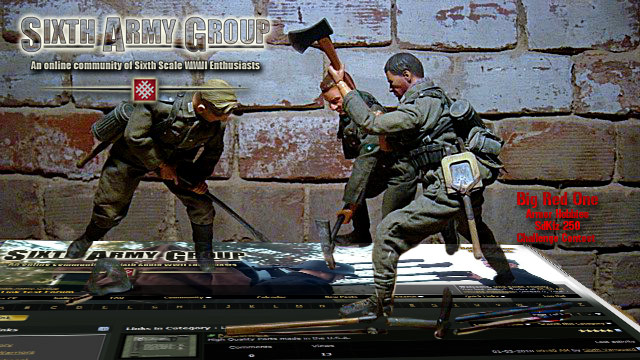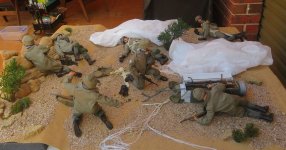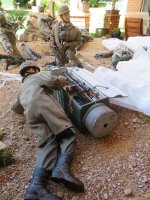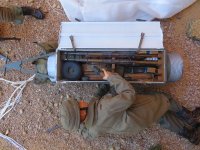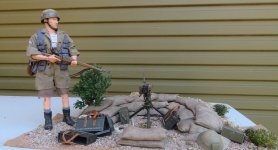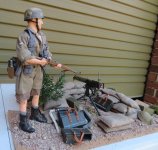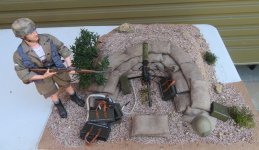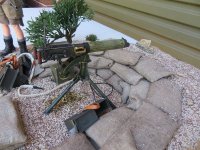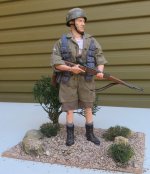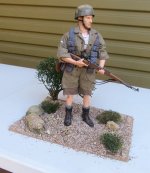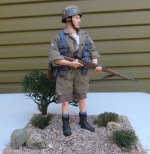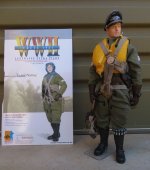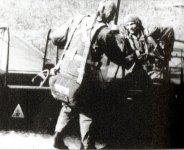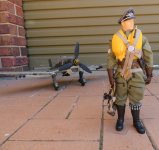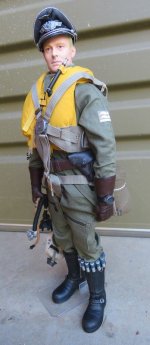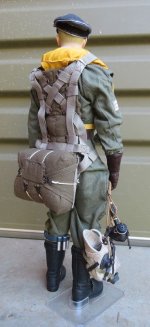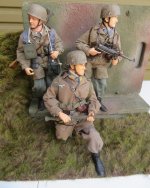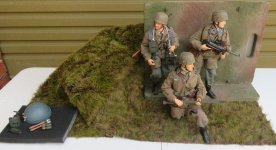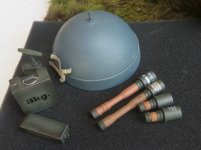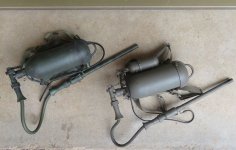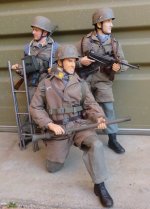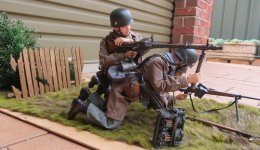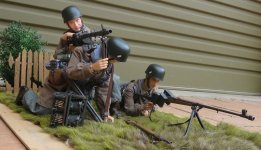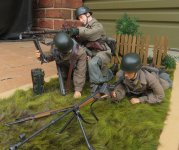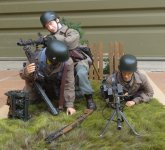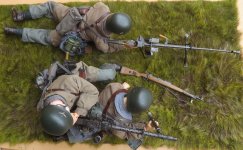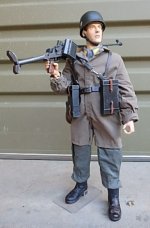SteveKrieg
Company Commander
In order to assist in rallying, a paratrooper nearby lobs a smoke grenade after having successfully retrieved a rifle and bandolier from the weapons container. A dead paratrooper lies nearby having been most likely shot during his decent (which was scarily common during the drop as Allied soldiers and anti-aircraft artillery honed-in for the 30 or so seconds it took for a paratrooper to drop from an average of 400ft).
Behind him, a paratrooper who had fired his pistol empty in-defence during the drop shows the fear that many would've faced. Whilst there were veterans from earlier campaigns (Denmark, Holland, Belgium), many were young and idealistic having joined after the French victory of 1940 - the allure that entices many to airborne forces worldwide is their unique espirit-de-corps.
The rocky ground was another hazard which was not helped by the clumsy designed of the RZ series of parachutes where the chute was secured to the centre of the pack on the man's rear meaning no means of controlling his decent and necessitating a knees/elbows impact followed by a role.
Not only was the chute a disadvantage but the harness also which took some unbuckling to get out of...time-consuming when under fire.
Behind him, a paratrooper who had fired his pistol empty in-defence during the drop shows the fear that many would've faced. Whilst there were veterans from earlier campaigns (Denmark, Holland, Belgium), many were young and idealistic having joined after the French victory of 1940 - the allure that entices many to airborne forces worldwide is their unique espirit-de-corps.
The rocky ground was another hazard which was not helped by the clumsy designed of the RZ series of parachutes where the chute was secured to the centre of the pack on the man's rear meaning no means of controlling his decent and necessitating a knees/elbows impact followed by a role.
Not only was the chute a disadvantage but the harness also which took some unbuckling to get out of...time-consuming when under fire.
